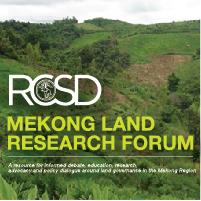Resource information
The purpose of this study is to identify potential agents of change in Myanmar society that can facilitate rapid industrialization and recommend ways the international community can support private sector development by aiding such groups. The historical enquiry in Part I suggests Myanmar‟s lack of success in industrialization is largely due to an inward looking political elite with a predisposition towards State-led development rooted in nationalism stemming from the colonial period. The hybrid economy, which is neither socialist, mixed economy nor market oriented, created by partial economic reform and reversals since 1988 has two implications for the current situation. First, the new president in his promotion of the economic reform agenda is not constrained by policy formulation capacity: economists have had many years to consider ways to re-establish transition to market oriented economy. Second, the very existence of a hybrid economy reveals the presence of powerful interests vested in the status quo. Implementation capacity is the main issue and two prospective scenarios are outlined: de- industrialization should the president fail in his mission and the initiation of rapid industrial development should he succeed. Part II takes cognizance of current dynamics in the world economy as well as noting the development paths of successful economies in the region. Myanmar‟s factor endowment is reviewed in the light of the „resource curse‟ and the economic reform agenda is outlined, with outward orientation and private sector-led development emphasized. Industrial development hinges on the Biz-15 (the country‟s best-connected businessmen with their large family-owned conglomerates) aligning their interests with SMEs: they stand to vastly increase their fortunes by building and operating the modern infrastructure essential for a competitive and dynamic SME-populated manufacturing exports sector, and also by facilitating “anchor” FDI from MNCs. Such fortunes, commensurate with those in the region, would be justified if the Biz-15 can raise the rate of progressive change acceptable to their political patrons so Myanmar‟s 60mn population can all prosper. In Part III, I recommend the international community support a major study by a supply chain manager working with Biz-15 members to explore strategies for the growth and integration of a nascent export processing sector in Myanmar into the China-centric Asian supply chains to rich country markets.


